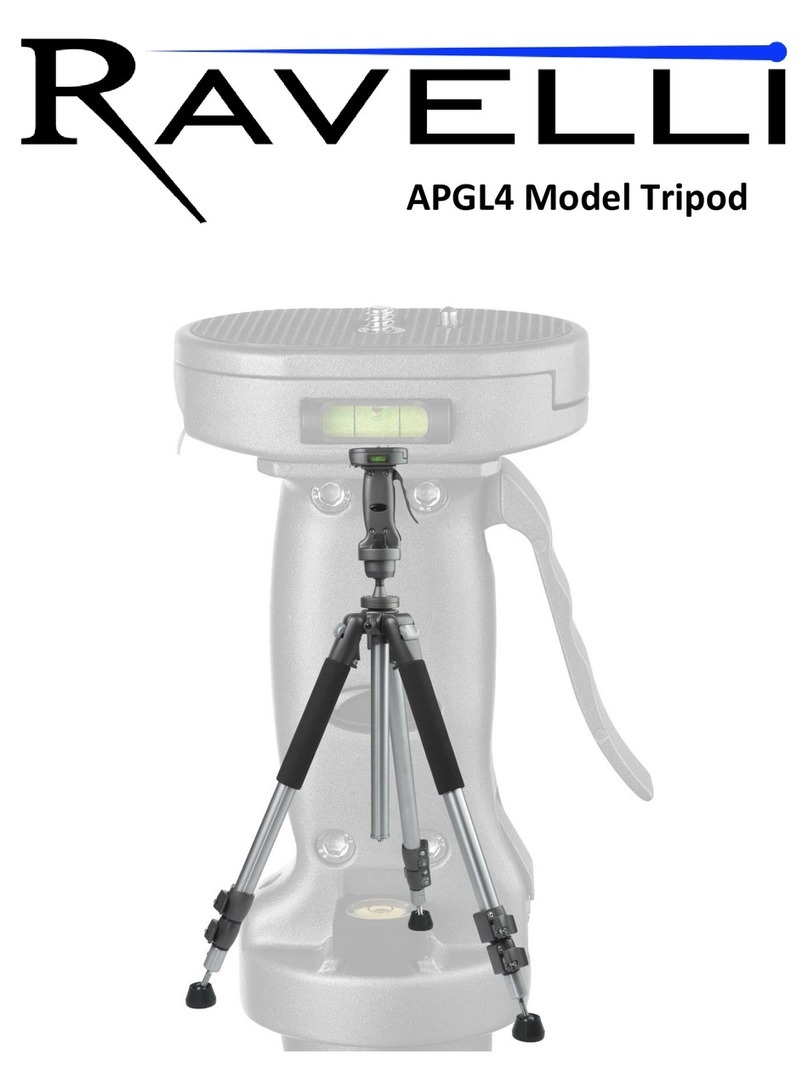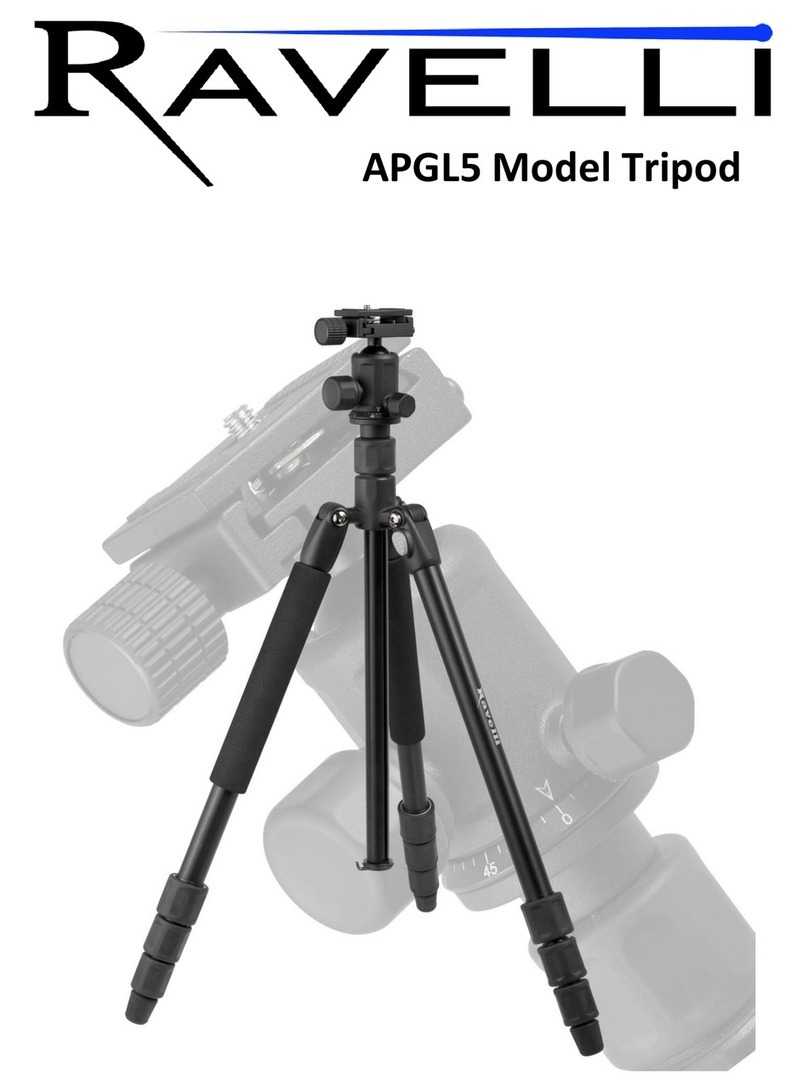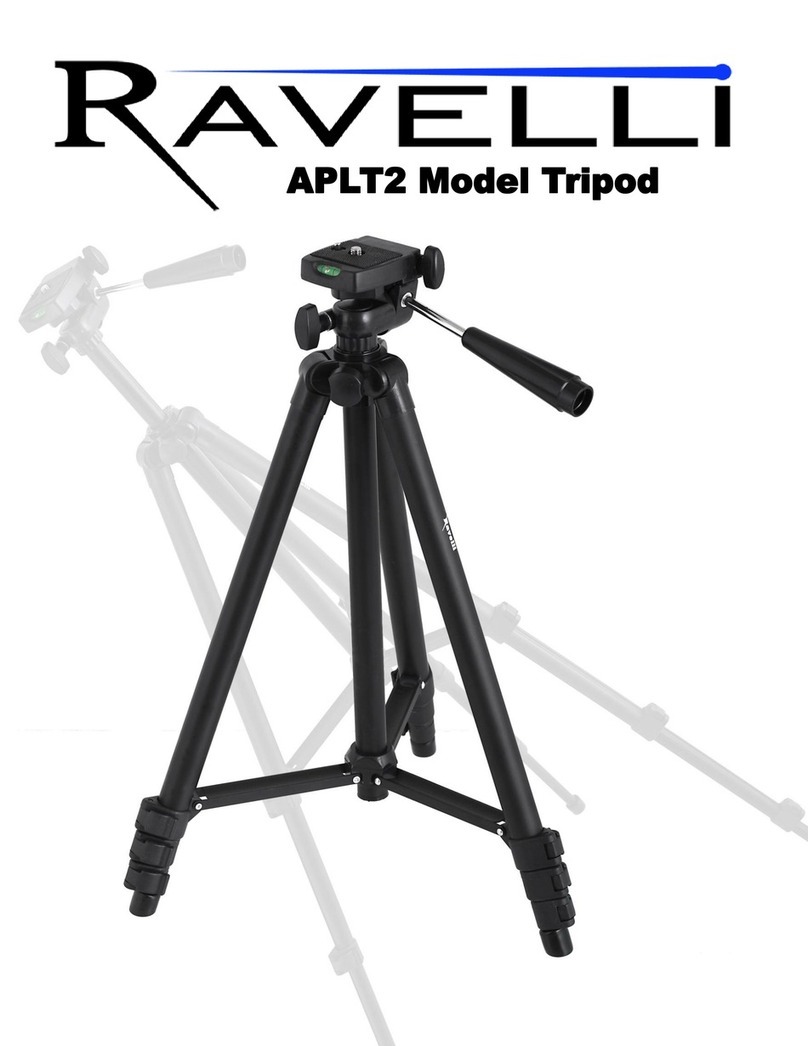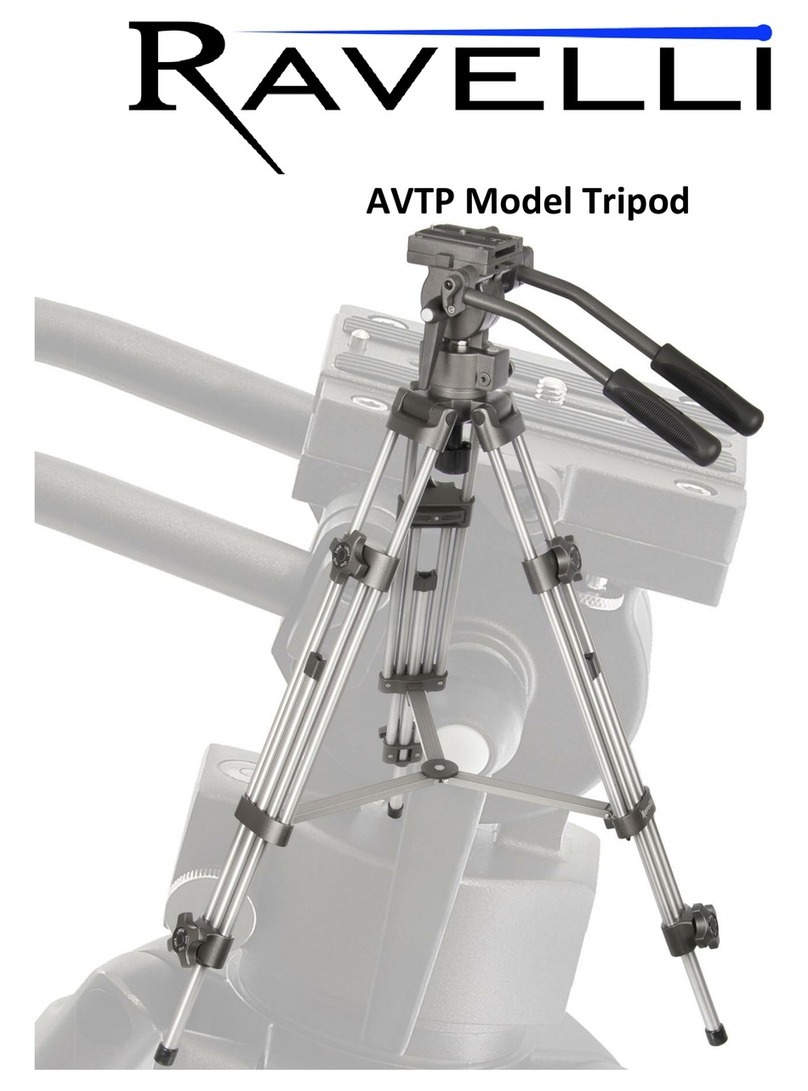
threads. Be careful as the two black tabs may fall out. When
done removing any sand, line tabs with the indentions inside
the holes at the end of the leg, and insert the leg back into the
stand.)
Each leg is designed with an Allen bolt. If the legs become loose
after long term use, you may adjust the tension on the leg
attachment screws/pivot points.
Caution:There is a tipping risk for the fully extended tripods.
This can be due to moving the tripods while fully extended,
things such as uneven surfaces or wind. To reduce the risk of
tipping over, we recommend placing one tripod leg facing the
same direction as the camera or the heavy part of mounted
equipment to balance the weight. We also recommend
purchasing sand bags or weights to set on the tripod legs to
hold the tripod in place. Ravelli™ guarantees the tripod only
and is not liable for damage caused to backdrops, cameras,
lighting, or any other items.
Caution: Always ensure all leg lock knobs, center column
knob and ball head knobs are securely tightened before
placing it on a firm surface.
* The included bubble level is a guide. The exact level position
of the tripod depends on the extension of the legs, the angle of
the legs, whether or not the surface the tripod is sitting on is
level or not etc. Also, the bubble level is mid-level on the
tripod head and slightly off of dead center. Thus, it may read
perfectly level with the tripod head pointing in one directly and
then read something other than perfectly level during a pan.
Also, it is possible for the tripod to be level at the base of the
head where the level is but off slightly above or below the level.
If it is crucial to the user to have perfect true level, we
recommend using a professional separate level at least 6 inches
in length or more.

































